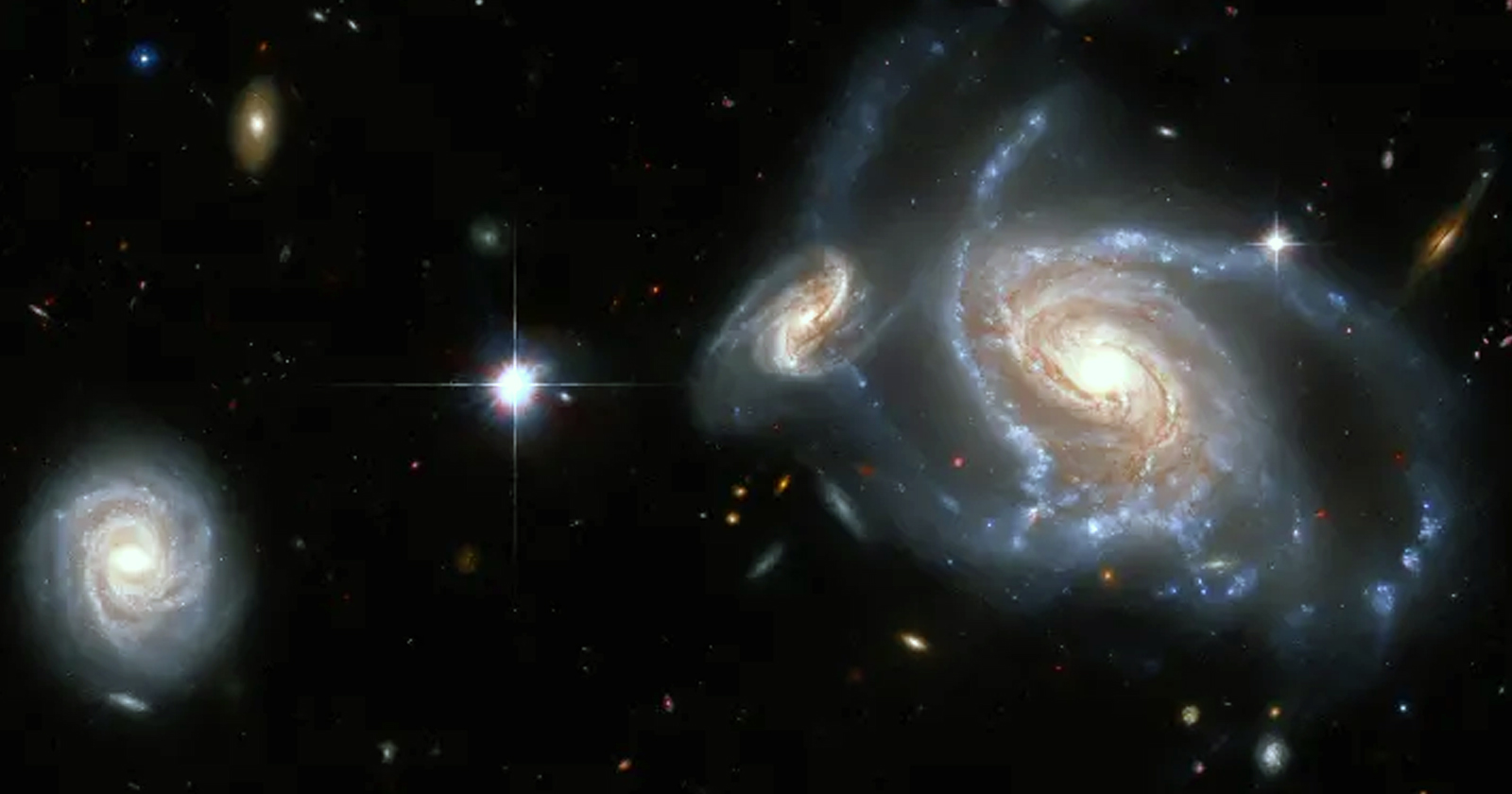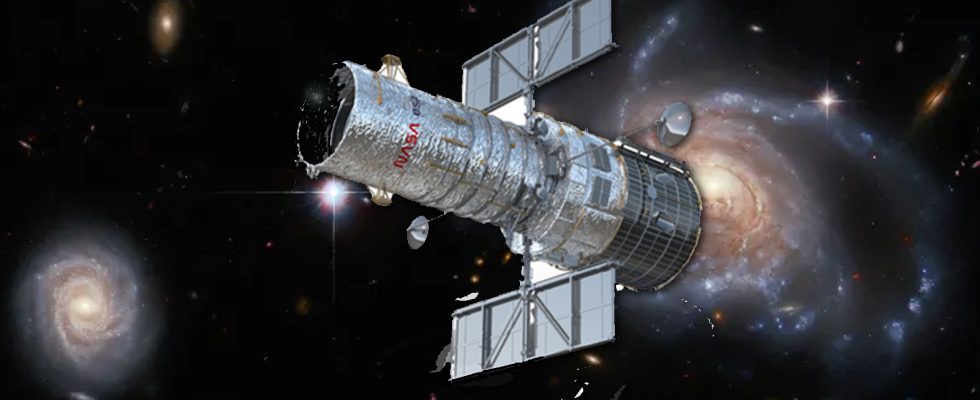In its latest cosmic masterpiece, the Hubble Space Telescope has captured a mesmerizing scene featuring four spiral galaxies participating in an intricate dance of overlapping cosmic vortices.
Hubble photographs spiral galaxies overlapping in cosmic harmony
Dominating the right side of the image, NGC 1356 is the largest galaxy in the frame, famous for its elegant barred spiral structure reminiscent of the Milky Way. NGC 1356, often referred to as the Great Barred Spiral Galaxy, exhibits a prominent bar, a bright central structure filled with stars.

Adjacent to NGC 1356, two smaller spiral galaxies named LEDA 467699 and LEDA 95415 appear in a seemingly tight embrace. On the left is IC 1947, a lone galaxy added to the cosmic tapestry.
optical illusion
The optical illusion in this celestial portrait photographed by Hubble is caused by the apparent proximity of LEDA galaxies to NGC 1356. Although they appear to be close together, these galaxies are actually millions of light years away from each other.
This illusory alignment reflected in Hubble’s lens is a result of the perspective from Earth and creates the illusion of overlap when observed from our vantage point. In contrast, IC 1947, standing alone on the left, is physically closer to NGC 1356, less than 400,000 light-years apart.
This makes them cosmic neighbors in this part of the universe. What are you thinking? Please don’t forget to share your thoughts with us in the comments.

